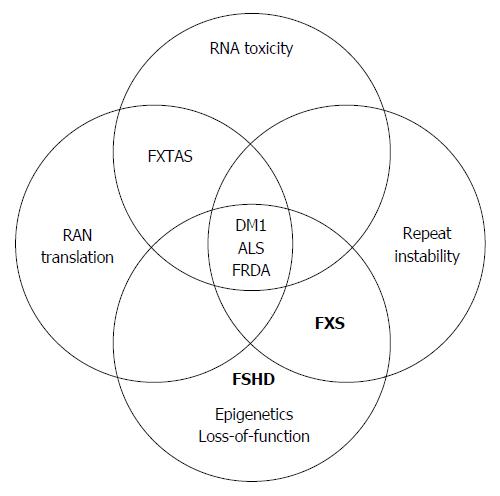Copyright
©The Author(s) 2015.
World J Stem Cells. Jun 26, 2015; 7(5): 823-838
Published online Jun 26, 2015. doi: 10.4252/wjsc.v7.i5.823
Published online Jun 26, 2015. doi: 10.4252/wjsc.v7.i5.823
Figure 1 Modeling pathogeneic noncoding repeat expansions by the use of mutant pluripotent stem cells.
Unstable noncoding repeat expansions have several features in common. They typically display somatic instability, and can lead to either epigenetic loss-of-function, toxic RNA gain-of-function, toxic RAN translation, or to a combination of all these pathogenic mechanisms. Future research might discover more similarities in the pathogenesis of these and additional repeat associated disorders. Disease modeling through the use of mutant HESCs and iPS cells is anticipated to be particularly useful considering their potential to generate impaired cells, and their ability to recapitulate developmentally regulated events upon differentiation. Indeed, using this model system, new mechanistic insights have thus far been gained for diseases marked in bold. FSHD: Facioscapulohumeral Muscular Dystrophy; FXS: Fragile X syndrome; ALS: Amyotrophic lateral sclerosis; FRDA: Friedreich ataxia; FXTAS: Fragile X-associated tremor/ataxia syndrome; DM1: Myotonic dystrophy type 1.
- Citation: Yanovsky-Dagan S, Mor-Shaked H, Eiges R. Modeling diseases of noncoding unstable repeat expansions using mutant pluripotent stem cells. World J Stem Cells 2015; 7(5): 823-838
- URL: https://www.wjgnet.com/1948-0210/full/v7/i5/823.htm
- DOI: https://dx.doi.org/10.4252/wjsc.v7.i5.823









